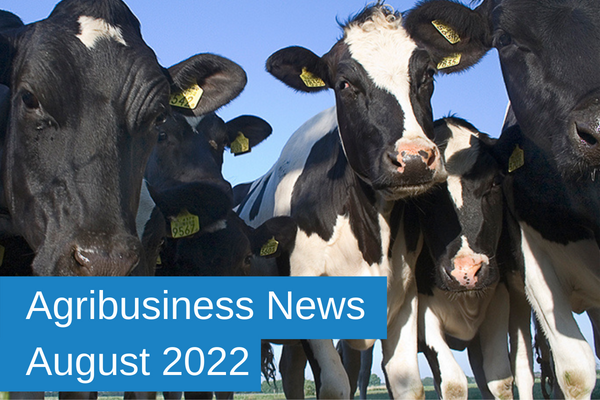Agribusiness News August 2022 – Input Costs: Sexed Semen
3 August 2022Sales of sexed (or gender sorted) semen have increased significantly in recent years, accounting for over half of all UK dairy semen sales. This increase is largely due to better success rates and more competitive pricing. The success rates of sexed semen in the past have been relatively low in comparison to conventional semen largely due to damage caused to sperm during the sorting process and fewer sperm per dose. However, due to advances in technology, some breeding companies are claiming that it is up to 90% as effective as conventional semen.
Sexed semen has the potential to speed up genetic progress, increase the number of replacement heifers coming into the herd and maximise beef calves from dairy cows. Realistically, a 20% reduction in conception rates is expected from using sexed semen on milk cows. If you would normally expect to get conception rates of 40% when using conventional semen, then you would expect conception rates of 32% when using sexed semen¹.
¹Figures from Farming Connect Article by Dr Cate Williams: IBERS, Aberystwyth University
Factors affecting success rates
There are many factors that will determine the success of using sexed semen on the dairy herd.
- Milk yield
- Age of cows
- Stage of lactation
- Diet
- Timing of inseminations
- Environmental conditions i.e., Heat stress
- Semen handling
- Competency of the inseminator
Improving success rates
Milk yield is likely to affect success rates when using sexed semen, with higher-yielding herds experiencing reduced fertility. Lower-yielding cross-bred herds may experience conception rates closer to that of conventional. When allocating sexed semen to milking cows, prioritising younger animals, animals with better condition scores and ones earlier into the lactation should give better success rates. Genomic testing of females and prioritising those of higher genetic merit could also bring better returns.
Using sexed semen to boost replacements
Producing replacements from a closed herd mitigates the risk of buying in disease and ensures the quality of new stock. If a herd has a shortage of replacement heifers, then increasing sexed semen use on milkers will generate additional replacements whilst maximising the use of beef on dairy. However, reduced success rates may reduce pregnancy rates, increasing calving intervals and potentially leading to an increase in cull cows. Semen costs will also increase due to the higher cost of sexed semen and an increase in animals requiring repeat services. Cost savings coming from rearing replacements rather than purchasing at higher costs could potentially outweigh costs associated with reduced pregnancy rates. The opportunity to sell surplus heifers could generate additional income, however, profit margins will be influenced by rearing costs and market value.
Is it cost-effective?
A 200-cow herd, with a 25% replacement rate would require 50 replacements each year to maintain herd size. Using only conventional semen, 73% of the herd would need to be put to dairy in order to produce enough replacements. If the same herd used sexed semen on 41% of milk cows, rather than conventional, then the remaining 59% could be put to beef. This could create an additional income of £8,112 from calf sales².
Semen costs will increase by £1,988 and there may be a reduction in the 21-day pregnancy rate due to reduced conception rates³. A possible loss of 1 pregnancy every 21 days will cause the pregnancy rate to fall from 25% – 22%. Consequently, this will lead to an increase in days to conception, estimated to cost anywhere between £2.41-£6.52 per day, based on a study by Cambridge University. Depending on the farm’s breeding policy, this could lead to voluntary culling of animals who fail to conceive within a set timeframe or after multiple services.
²Based on the market value of Holstein bull calves at £80/hd and British Blue cross calves at £250/hd
³Semen costs are calculated using the AHDB semen usage calculator. Based on beef semen at £10/straw, Conventional dairy at £20/straw and Sexed at £30/straw
Using sexed semen on youngstock
Conception rates of sexed semen on maiden heifers are relatively equal to that of conventional semen. Maximising the use of sexed semen on maiden heifers will reduce the number of dairy calves needed from milk cows. In theory, genetic progress will improve with each generation of breeding, therefore the younger the animal, the more genetically superior it is likely to be. The maximum genetic gains will be achieved from pregnancies out of maiden heifers. Replacing conventional semen for sexed semen on maiden heifers will produce more heifer calves from youngstock, optimise beef calves from milk cows and potentially reduce overall semen costs by through the increased use of cheaper beef semen.
Sign up to the FAS newsletter
Receive updates on news, events and publications from Scotland’s Farm Advisory Service

